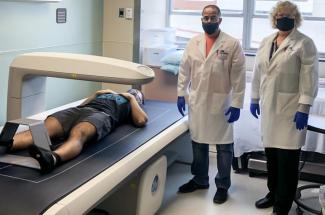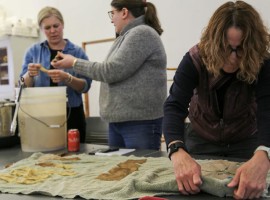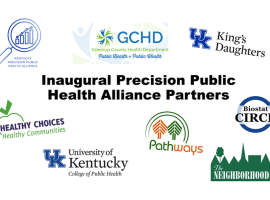UK College of Education Study Focuses on Hip Osteoarthritis Among Farmers

The demands of farming put agricultural workers at high risk of developing hip osteoarthritis. Researchers at the University of Kentucky College of Education are looking at why this happens and will develop methods to optimize hip health.
The pilot study, funded by the Southeast Center for Agricultural Health and Injury Prevention, is pairing two Department of Kinesiology and Health Promotion faculty members to assess farmers. Primary investigator Michael Samaan, an assistant professor specializing in biomechanics, will perform gait analysis and strength testing. Co-investigator Jody Clasey, a professor of exercise physiology, will contribute to the study’s bone density screening and analysis using dual energy X-ray absorptiometry (DXA) scanning.
The team will explore potential gait abnormalities, neuromuscular issues and hip joint bone composition in the farming population. Farmers will be referred to this study through the Southeast Center for Agricultural Health and Injury Prevention.
“Farm work can be grueling and leave a lasting impact,” Samaan said. “Farmers are at a significantly higher risk, compared to the general population, of developing hip osteoarthritis. We need to know more about how the biomechanics of farm work predisposes farmers to hip joint degeneration and pain.”
The research will include:
-
measures of gait-related abnormalities using 3D gait analysis in the UK Human Performance Laboratory;
-
isometric hip muscle strength testing;
-
measures of bone physiology using DXA-imaging of the total body; and
-
psychological measures of the farmers’ abilities to control their hip pain.
This pilot project is the first study of its kind to measure the biomechanical, neuromuscular and psychosocial factors that contribute to the clinical- and structural-based symptoms of hip osteoarthritis in the farming community.
“We hope this study will help us develop the knowledge needed to move forward and develop targeted exercise- and mental health-based programs that will optimize hip joint mechanics, reduce hip pain and prevent hip joint degeneration in farmers,” Samaan said.





